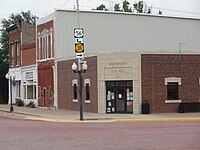
Photo from wikipedia
This paper aims to improve understanding of the grocery retail landscape in a megacity in the developing world. Over the past ten years (i.e., 2010–2020), retail in the grocery sector… Click to show full abstract
This paper aims to improve understanding of the grocery retail landscape in a megacity in the developing world. Over the past ten years (i.e., 2010–2020), retail in the grocery sector in Mexico City has changed significantly. The fast growth of chain convenience stores (CCS) and the financial stability of modern channel stores (MCS) has provoked speculation about whether nanostores (i.e., mom-and-pop stores) are going to disappear or if they will endure. In developing countries nanostores dominate the grocery retail market, providing a source of income to millions of families. While some studies suggest that nanostores will keep growing in number because they are more likely to be attached to growing middle- and low-income consumers in developing countries, our results show that high- and medium–high-income consumers purchase at nanostores too. Through a comprehensive spatial statistical analysis, we provide evidence that nanostores will endure and, most importantly, coexist with MCS and CCS regardless of the socioeconomic levels that coexist in the urban areas of a developing megacity. To gain a thorough understanding of how the grocery retail market is organized in Mexico City, and provide a richer discussion on the logistics and managerial implications for stakeholders (e.g., customers, practitioners, shopkeepers, suppliers, and policymakers), we also validate hypotheses from the literature related to this context and the three channels studied in this work.
Journal Title: Sustainability
Year Published: 2021
Link to full text (if available)
Share on Social Media: Sign Up to like & get
recommendations!